| | | OFFLINE | | Post: 19.272
Post: 1.914 | Registrato il: 28/08/2005
Registrato il: 20/01/2009 | Administratore | Utente Veteran | |
|
 GENERAL AUDIENCE TODAY
GENERAL AUDIENCE TODAY
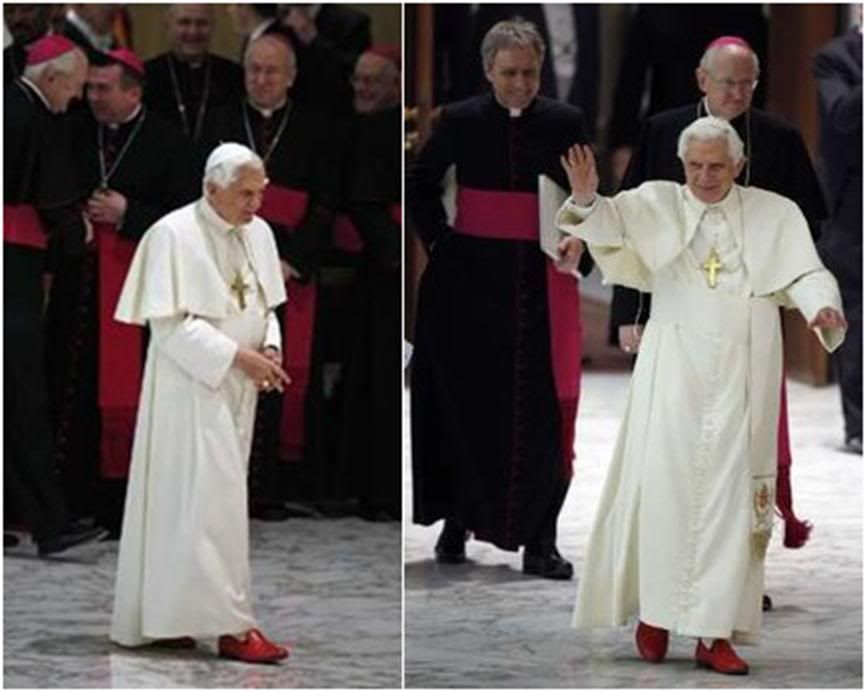
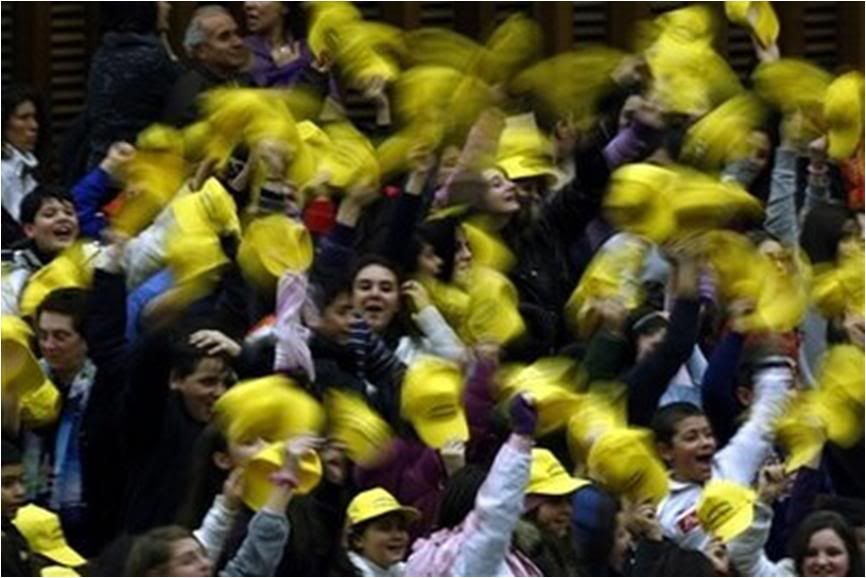
Pope Benedict XVI held his first General Audience for 2010 at the Aula Paolo VI this morning, during which he issued a special appeal in behalf of the earthquake-stricken people of Haiti.
Resuming his catechetical cycle on Christian culture in the Middle Ages, he spoke of the Mendicant Orders (Franciscans and Dominicans} and their extraordinary development in the 13th century.
Here is how he synthesized today's lesson in English:
In our catechesis on medieval Christian culture, we now consider the movement of ecclesial reform promoted by the two great Mendicant Orders.
In every age the saints are the true reformers of the Church’s life. In the thirteenth century Saints Francis and Dominic inspired a vast evangelical renewal which met three significant needs of the Church of that time.
The Franciscans and the Dominicans adopted a lifestyle of evangelical poverty which, unlike that of the Cathars, was grounded in communion with the visible Church and a sound Christian understanding of the goodness of creation.
As zealous preachers, especially in urban environments, the Friars provided religious instruction and spiritual guidance to the lay faithful, many of whom became members of their "Third Orders".
Travelling freely from place to place, they also contributed to the overall renewal of Church life and the spiritual transformation of society.
By their presence in the universities, the Friars worked for the evangelization of culture, affirming the harmony of faith and reason, and creating the great syntheses of scholastic theology.
May their example of holiness and evangelical lifestyle inspire our own witness to the Gospel and our efforts to draw the world to Christ and his Church.
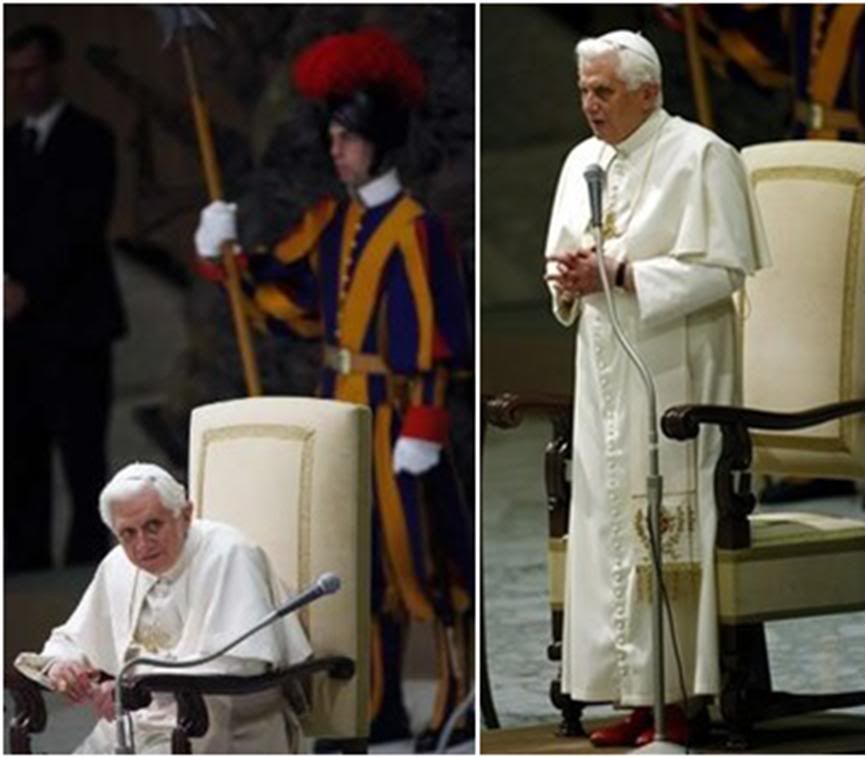
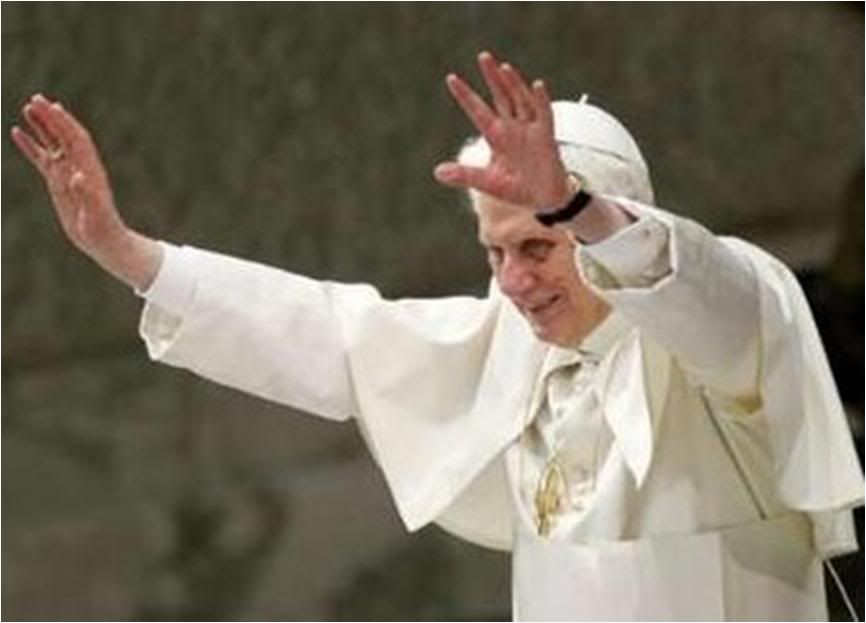
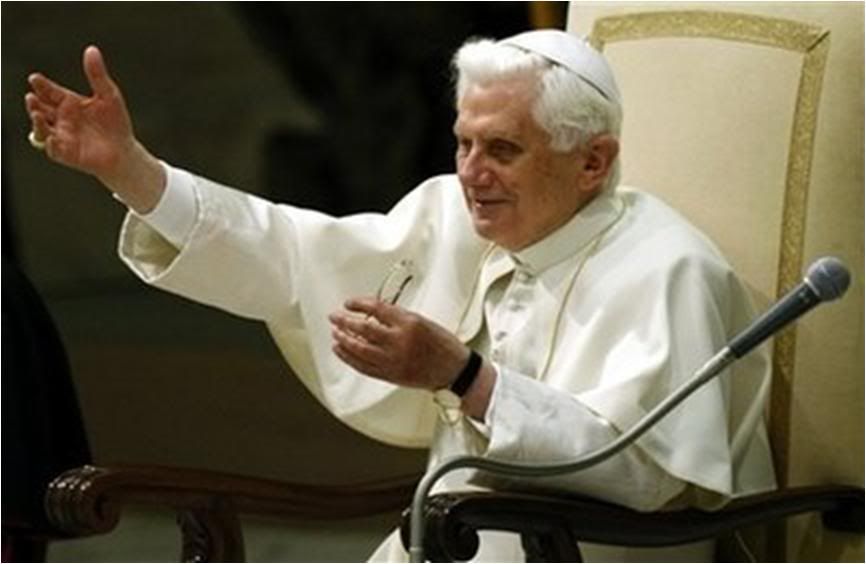
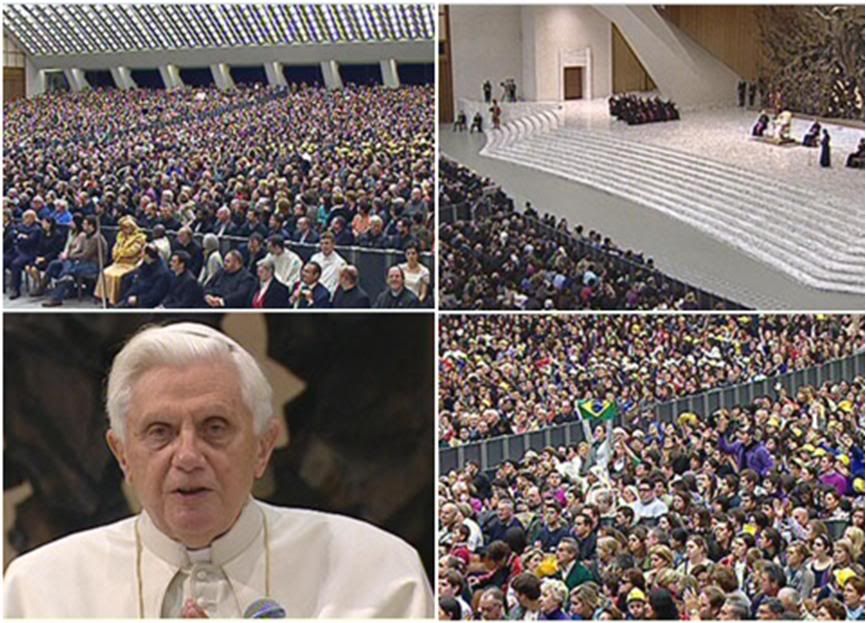 Here is a full translation of the catechesis:
Here is a full translation of the catechesis:
Dear brothers and sisters:
At the start of the new year, let us look at the history of
Christianity to see how history can develop and how it can be renewed.
In it, we can see who are the saints, guided by the light of God - the true reformers of the life of the Church and of society.
Teachers by words and witnesses by example, they are able to promote a stable and profound ecclesial renewal and they are in touch with the true good news: the presence of God in the world.
This comforting reality - that in every generation, saints are born who have the creativity of renewal - has accompanied the history of the Church amidst the sorrows and negative aspects of her journey forward.
Indeed, we see, every century, the birth and rebirth of the forces of reform and renewal, because the novelty of God is inexorable, and always gives new strength to move ahead.
Thus it happened in the 13th century, with the extraordinary development of the Mendicant Orders - a model for great renewal in a new historical era.
They were so called because of their characteristic feature of 'begging' - that is, relying humbly with the economic assistance of the people so they could live their vow of poverty and carry out their evangelizing mission.
Of the Mendicant Orders that emerged in that time, the best known and most important are the Friars Minor and the Friar Preachers, better known as Franciscans and Dominicans, respectively.
They are named for their founders, Francis of Assisi and Dominic de Guzman. These two great saints had the ability to read the 'signs of the times' intelligently, sensing the challenges that the Church of their time had to face.
A first challenge was represented by the expansion of various groups and movements of the faithful who, although inspired by a legitimate desire for authentic Christian life, often acted outside the communion of the Church. They were in profound opposition to the rich and beautiful Church that had developed with the flowering of monasticism.
In recent catecheses, I dwelt on the monastic community of Cluny, which had always attracted young and vital forces, as well as material goods and wealth. That is why, logically, what developed initially was a Church rich with properties and buildings.
Opposing such a Church was the idea that Christ came to earth as a poor man and that the true Church should be the Church of the poor. The desire for Christian authenticity therefore opposed the reality of the empirical Church. Thus, the so-called pauperist movements of the Middle Ages.
They openly contested the lifestyle of the priests and monks of the time, accusing them of having betrayed the Gospel and failing to practice poverty like the early Christians. These movements opposed a true 'parallel hierarchy' to the bishops. And in order to justify such decisions, they also disseminated doctrines that were incompatible with the Catholic faith.
For example, the movement of the Catari or Albigensians re-proposed ancient heresies, such as devaluation and contempt of the material world. The opposition to wealth quickly became opposition against material reality itself - the negation of free will, and thus dualism - the claim that there is a principle of evil on the same level as God.
These movements were successful especially in France and Italy, not only for their solid organization, but also because they denounced a real disorder in the Church as a reult of the far from exemplary behavior of various representatives of the Clergy.
The Franciscans and the Dominicans, in the footsteps of their founders, demonstrated instead that it was possible to live in evangelical poverty - the truth of the Gospel as such - without separating from the Church.
Thus they showed that the Church remains the true and authentic place for Gospel and Scripture. Indeed, Francis and Dominic drew the power of their testimony from their own intimate communion with the Church and with the Papacy.
With a choice that was completely original in the history till then of consecrated life, the members of these Orders not only renounced personal possessions, as monks had done from the earliest times, but they did not even wish to be associated with earthly communities and real properties.
Thus they meant to bear witness to an extremely sober lifestyle in order to show brotherly solidarity with the poor, confiding only in Providence - to live day to day out of Providence and their trust in putting themselves in God's hands.
This personal and communitarian style of the Mendicant Orders, united to their total adherence to the teaching of the Church and its authority, was much appreciated by the Popes of the time, like Innocent II and Honorius II, who offered their full support to these new ecclesial experiences, recognizing the voice of the Spirit in them.
The fruits were apparent. The pauperist groups that had been separated from the Church re-entered into communion with the Church, or slowly changed until they died out.
Even today, though we live in a society where often 'having' prevails over 'being', we are quite sensible to the examples of poverty and solidarity that believers show when making courageous choices.
Even today, similar initiatives are not lacking - in the movements that are truly based on the novelty of the Gospel and who live it radically in our day, placing themselves in the hands of God, in order to serve their neighbor.
The world, as Paul VI reminds us in Evangelii nuntiandi, gladly listens to teachers when they are also witnesses. This is a lesson never to be forgotten in the work of spreading the Gospel: to live in person that which one announces, to be a mirror of divine charity.
Franciscans and Dominicans were witnesses but also teachers. Indeed, another demand which was widespread in their time was religious instruction.
Not a few lay faithful who lived in cities under expansion wanted to practice a spiritually intense Christian life. Thus, they sought to deepen their knowledge of the faith and to be guided through the arduous but fascinating path of sanctity.
The Mendicant Orders gladly set forth to meet this end: the announcement of the Gospel in its simplicity, but also in all its profundity and grandeur, was an objective, if not the principal objective of this movement. And indeed, they dedicated themselves with great zeal to preaching.
Numerous faithful, often true and proper crowds, gathered to listen to these preachers in churches and in open spaces. Think of St. Anthony [of Padua], for example.
The preachers dealt with subjects close to the life of the people - above all, how to practice the theological and moral virtues, with concrete examples that were easily understandable.
They also taught ways to nourish a life of prayer and piety. For example, the Franciscans widely disseminated devotion to the humanity of Christ, with the aim of imitating the Lord.
It is not surprising then that there were numerous men and women who chose to take the Christian way of the Franciscan and Dominican friars, who were highly sought and appreciated spiritual directors.
Thus were born associations of lay faithful, inspired by the spirituality of St. Francis and St. Dominic, as adapted to their own status as laymen. These are the Third Orders, Franciscan and Dominican.
In other words, the proposal for a 'lay sainthood' conquered many faithful. As the Second Vatican Council reminded us, the call to sainthood is not reserved to some but is universal (cfr Lumen gentium, 40). In all conditions of life, according to the demands of each of then, it is possible to live the Gospel. Even today, every Christian should aim for 'the high standard of Christian life', whatever his status in life.
The importance of the Mendicant Orders grew so much during the Middle Ages that lay institutions, like work organizations, ancient corporations and guilds, and civilian authorities themselves, often availed of members of these Orders for spiritual counsel and guidance in drafting their own rules, and sometimes, even to help solve internal and external conflicts.
The Franciscans and Dominicans became the spiritual inspiration of the medieval city. And with great intuition, they set into motion a pastoral strategy adapted to the transformations in society.
Since many people were moving from the countryside to the cities, they started to build their monasteries and convents no longer in rural zones, but in the cities.
Moreover, in order to carry out their activities as pastors of souls, they moved around depending on pastoral necessities. In another choice that was completely innovative, the Mendicant Orders abandoned the principle of stability that had been classic in early monasticism, and travelled from one place to another with missionary fervor. Consequently, this resulted in an organization that was different from those of most other monastic orders.
In place of the traditional autonomy that each monastery had, these institutions assigned grater importance to the Order in itself and to the Superior General, as well as to the structure of their 'provinces'. Thus the Mendicants were much more available for the needs of the Universal Church.
This flexibility made it possible to send friars who were more adapted to carry out specific missions, and the Mendicant Orders reached North Africa, the Middle East and northern Europe. This flexibility renewed missionary dynamism.
Another great challenge was represented by the cultural transformations under way at that time. New issues gave rise to lively debates in the universities that were born towards the end of the 12th century.
Minors and Preachers [i.e., Franciscans and Dominicans] did not hesitate to take on this demand, and as students and professors, they joined the most famous of the early universities, set up centers for study, produced texts of great value, gave rise to true and proper schools of thought, became the protagonists of scholastic theology in its best period, and made a significant mark in the development of thought.
The greatest of their thinkers, St. Thomas Aquinas and St. Bonaventure, worked precisely with the dynamism of the new evangelization - which had also renewed the courage to think - and the dialog between reason and faith.
Even today, 'charity in and of the truth', an 'intellectual charity', must be exercised in order to illuminate intelligence and conjugate faith with culture.
The profuse commitment of the Franciscans and Dominicans in the medieval universities is an invitation, dear faithful, to be present in the places where knowledge is elaborated, in order to propose, with respect and conviction, the light of the Gospel on the fundamental questions that are of interest to man, his dignity and his eternal destiny.
Thinking back to the role of Franciscans and Dominicans in the Middle Ages, to the spiritual renewal that they inspired, to the breath of new life that they communicated to the world, a monk said: "At that time, the world was growing old. Two Orders emerged in the Church, who renewed its youth like that of an eagle" (Burchard d’Ursperg, Chronicon).
Dear brothers and sisters, at the start of this new year, let us invoke the Holy Spirit, the eternal youth of the Church. May he make each of us feel the urgency of offering consistent and courageous witness to the Gospel, so that we may not lack for saints, without spots or wrinkles, who are capable to irresistibly attract the world towards Christ, towards its salvation.
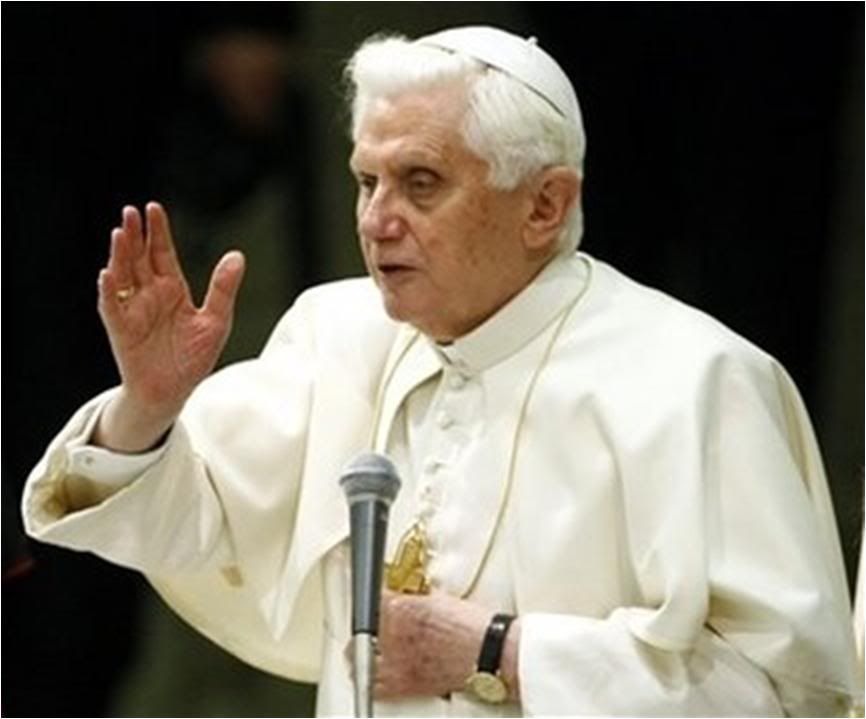
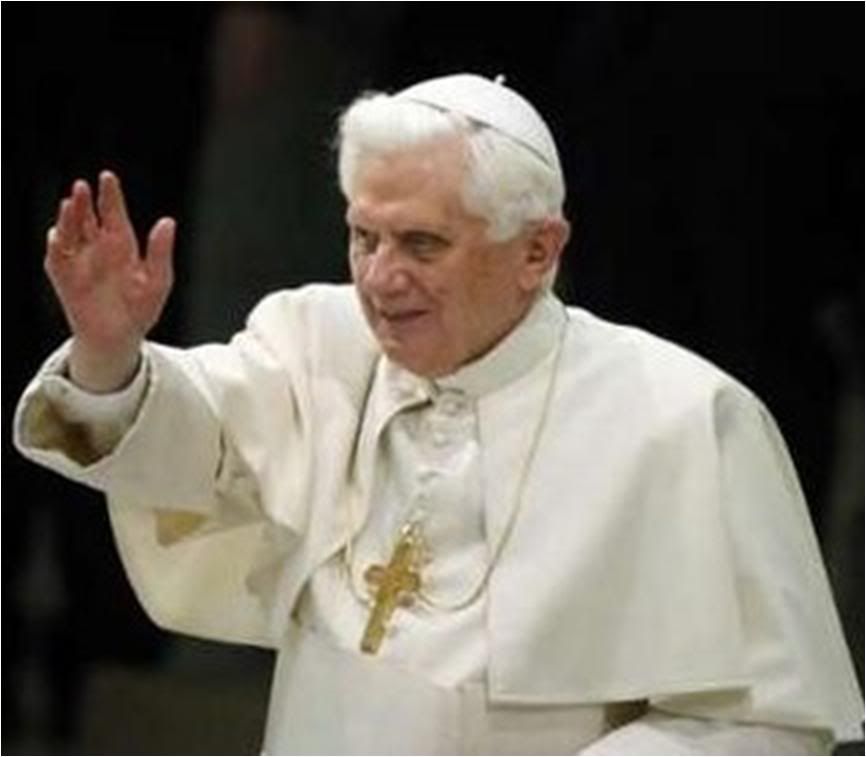

[Modificato da TERESA BENEDETTA 14/01/2010 00:07] |